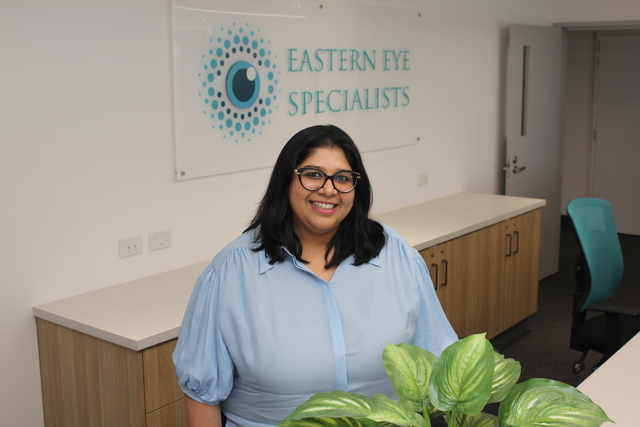By Dongyun Kwon
There’s an eye disease taking hold of 300,000 Australians, with more than half going about their day-to-day lives without a diagnosis or the knowledge they are affected.
In Australia, one in 10,000 babies are born with glaucoma, one in 200 have it by age 40 and one in eight have it by age 80.
Yarra Valley is also under the impact of the disease.
Eastern Eye Specialists, a local ophthalmic clinic located in Lilydale and Bayswater, founding director Dr Malvika Gupta said approximately one in eight of her patients would have glaucoma.
“It is very important to understand that many people who have glaucoma are actually not aware and many times they don’t go to the optometrist because they don’t think anything is wrong,” she said.
“More than 70 per cent actually have no symptoms, we are trying to prevent them from getting into late-stage glaucoma which could make them lose driving vision and visual field.
“Anybody who’s on doctor’s care, it’s very unlikely for them to lose their vision completely, but someone who has not been diagnosed and no treatment has been done can lose their central vision or visual field which causes legal blindness and inability to drive.”
Australian Society of Ophthalmologists (ASO) vice president associate professor Ashish Agar said the ASO was drawing attention to glaucoma, also known as the silent thief of sight, during the World Glaucoma Week from 10 to 16 March.
“Glaucoma is a condition where the eye’s optic nerve, which provides information to our brain, is damaged with or without raised intraocular pressure,” he said.
“Glaucoma develops slowly and often without any symptoms, which is why there is such a high rate of non-detection in Australia.
“When left untreated, it can cause vision loss or lead to irreversible blindness reinforcing why awareness and early intervention are crucial.”
The first line of treatment for most patients with glaucoma is eye lasers and eye drops, which could salvage most of the disease problem and prevent further progression.
Dr Gupta said regular screening would be a key to prevent late-stage glaucoma.
“Everybody over 50 years old needs to see an optometrist every year because they can identify if you have any risk factors for developing the disease,” she said.
“If you do have risk factors, then they could refer you to the ophthalmologist.
“More people can be managed early if we pick it up early, that will save a lot of damage and the disease burden.”
Dr Gupta said there has been a remarkable progression in terms of treatment for patients with glaucoma in Yarra Valley.
“A few years ago, the laser wasn’t available within Yarra Valley, but, fortunately, we now have a laser called Selective Laser Trabeculoplasty,” she said.
“It’s a laser that gently stimulates the eye to pump the eye fluid better and that helps regulate the tension on that optic nerve.
“Only when somebody needs glaucoma surgeries, we send them to eye and ear hospitals, which is extremely rare.”







